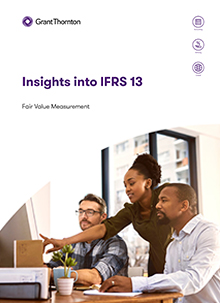
This Standard clarifies how to measure fair value when a market becomes less active. IFRS 13 applies to both financial and non-financial items but does not address or change the requirements on when fair value should be used.
IFRS 13 has been effective since 1 January 2013 and was subject to a Post Implementation Review (PIR) in 2017. As a result of this PIR, the International Accounting Standards Board (IASB) concluded that IFRS 13 is working as intended. Specifically:
- the information required by IFRS 13 is useful to users of financial statements
- some areas of IFRS 13 present implementation challenges, mainly in areas requiring judgement. However, evidence suggests that practice is developing to resolve these challenges, and
- no unexpected costs have arisen from application of IFRS 13.
The IASB therefore concluded no changes were required to IFRS 13.
In this insight you will find:
- A summary of IFRS 13 Fair Value Measurement
- Scope of the Standard
- Definition of Fair Value
- The fair value measurement approach in IFRS 13
- Valuation techniques referred to in IFRS 13
- Presentation and Disclosures in IFRS 13.
How we can help
We hope you find the information in this article helpful in giving you some insight into IFRS 13. If you would like to discuss any of the points raised, please speak to our experts Christoph Zimmel and Rita Gugl.


